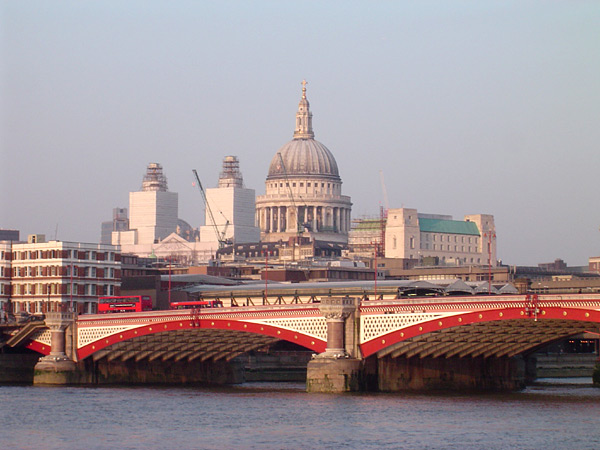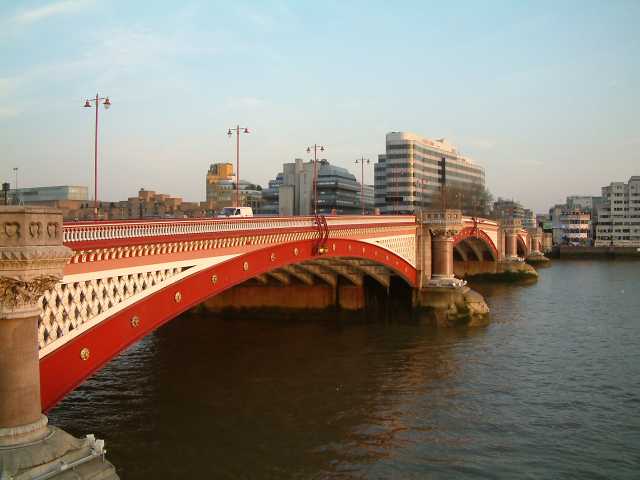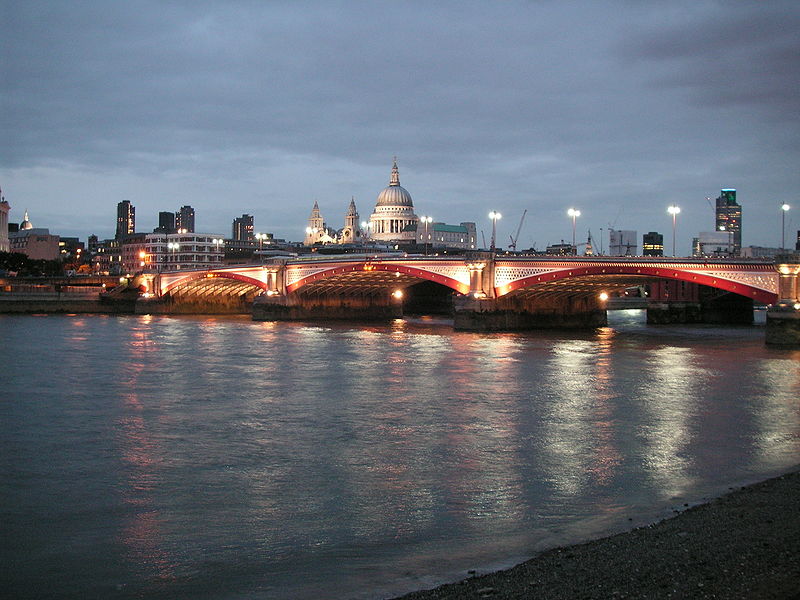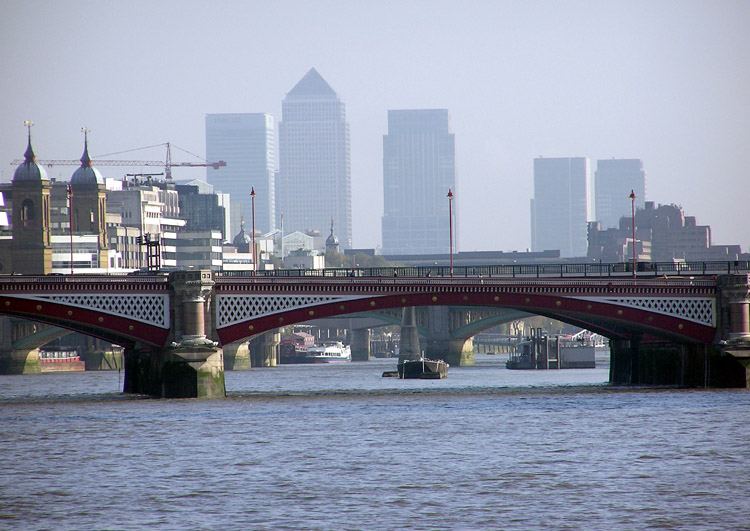Blackfriars Bridge
Blackfriars Bridge is a road and foot traffic bridge over the River Thames in London, between Waterloo Bridge and Blackfriars Railway Bridge, carrying the A201 road. The north end is near the Inns of Court and Temple Church, along with Blackfriars station. The south end is near the Tate Modern art gallery and the Oxo Tower.

Blackfriars Bridge
Carries Motor vehicles (A201 road), Pedestrians
Crosses River Thames Locale London, England
Design Arch Bridge
Opening date 1869

The first fixed crossing at Blackfriars was a 995 feet (303 m) long toll bridge designed in an Italianate style by Robert Mylne and constructed with nine semi-elliptical arches of Portland stone. Beating designs by John Gwynn and George Dance, it took nine years to build, opening to the public in 1769. It was the third bridge across the Thames in the then built-up area of London, supplementing the ancient London Bridge, which dated from several centuries earlier, and Westminster Bridge. It was originally named "William Pitt Bridge" (after the Prime Minister William Pitt) but was soon renamed after Blackfriars Monastery, a Dominican priory which once stood nearby.

Although it was built of Portland stone the workmanship was very faulty. Between 1833 and 1840 extensive repairs were necessary, and a good deal of patching-up was done, until at last it was decided to build a new bridge on the same site (the present bridge), which, in 1869, was opened by Queen Victoria. The present bridge is 923 feet long, consisting of five wrought iron arches built to a design by Thomas Cubitt. Cubitt also designed the adjacent rail bridge (now demolished) and it was a condition that the spans of the two bridges be aligned. It was built by P.A. Thom & Co. and is owned and maintained by the City Bridge Trust, a charitable trust overseen by the City of London Corporation. Due to the volume of traffic over the bridge, it was widened between 1907–10, from 70 feet (21 m) to its present 105 feet (32 m). The bridge became internationally notorious in 1982, when the Italian banker Roberto Calvi was found hanged below one of its arches in what was originally believed to be a suicide, but is now officially regarded as a murder. On the piers of the bridge are stone carvings of water birds by sculptor John Birnie Philip. On the East (downstream) side (i.e. the side closest to the Thames Estuary and North Sea), the carvings show marine life and seabirds; those on the West (upstream) side show freshwater birds - reflecting the role of Blackfriars as the tidal turning point. On the north side of the bridge is a statue of Queen Victoria to whom the bridge was dedicated.

The bridge gave its name to Blackfriars Bridge railway station which opened in 1864 before closing to passengers in 1885 following the opening of what is today the main Blackfriars station. Blackfriars Bridge railway station continued as a goods stop until 1964 when it was completely demolished, and much of it redeveloped into offices. The River Fleet empties into the Thames under the north end of Blackfriars Bridge. The structure was given Grade II listed status in 1972.